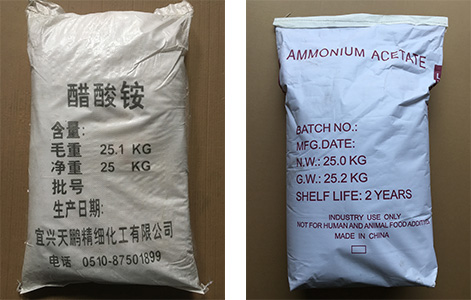Description
Ammonium acetate is a chemical compound that is derived from the reaction between acetic acid and ammonia. It has a molecular formula of NH4C2H3O2. It appears as a white crystalline solid with a vinegar-like odor and is highly soluble in water, making it an excellent choice as a buffer solution.
Ammonium acetate has a wide range of applications in various fields, including the pharmaceutical, biochemical, and food industries. In molecular biology and biochemistry, it is commonly used as a buffer solution to maintain a stable pH level in solutions during experiments. This makes it ideal for use in a variety of procedures such as DNA extraction, protein purification, and enzymatic assays.
Furthermore, ammonium acetate is used in the production of pharmaceuticals, dyes, and other chemicals. It is also used as a food additive and flavoring agent in some food products. In analytical chemistry, ammonium acetate is used for the separation and purification of proteins and other molecules. Its ability to form complexes with metals makes it useful in analytical chemistry for the determination of trace metal ions in solution.
In gas chromatography, ammonium acetate is commonly used as a mobile phase. This technique is used to separate and analyze complex mixtures by separating the various components of a sample. Ammonium acetate is also used in the manufacturing of plastics and in the textile industry for dyeing and printing of fabrics.

Usage
- Buffer solution
- Chemical synthesis
- Food additive
- Analytical chemistry
- Gas chromatography
Manufactured by WuXi Feipeng, China
